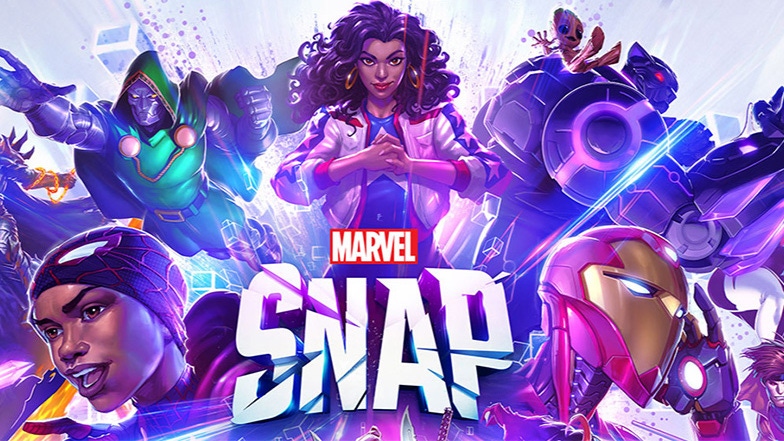Trending
Opinion: How will Project 2025 impact game developers?
The Heritage Foundation's manifesto for the possible next administration could do great harm to many, including large portions of the game development community.
Second Dinner's Matt Wyble and Hamilton Chu discuss the design principles of the hit game Marvel Snap.

Second Dinner and NuVerse's Marvel Snap took home the award for best mobile game at the 2023 DICE Awards last week—and shortly after accepting the prize, Marvel Snap general manager Matt Wyble and Second Dinner co-founder Hamilton Chu were game to look back on how they and their colleagues created such a compelling mobile game. (Please help me I cannot stop playing.)
During this chat, the pair reflected on the early days of making Marvel Snap, and shared a fun fact that may inspire other digital collectible card game designers: before the team began prototyping the award-winning video game, they were sitting around a table, playing early prototypes using physical cards.
"The very first prototype was us writing writing powers and numbers on old business cards," Chu recalled. He was reflecting on an offhand comment we'd made that the game felt very true to the genre's tabletop roots, with abilities and powers that can be explained through text and very clear if-->then logic.
Though Chu didn't directly address it, it seems like designing Marvel Snap cards by writing on physical business cards comes with another advantage: when you're working with the physical medium, you have to make sure that the abilities of a given card are readable in that small format. By now, plenty of games like Magic: The Gathering and Yu-Gi-Oh! have definitely abused the size of the standard American-sized playing card, printing small novels on cards in order to orchestrate complex abilities.
But Marvel Snap has kept things fresh and favorable by keeping abilities to short, snappy sentences—not unlike some of the dialogue in the comics it's inspired by.
When working with a licensing partner like Marvel, it's obvious that the company's deep vault of comic book characters can be a great foundation for coming up with fun and interesting mechanics. Spider-Man can web up locations, Deadpool and Wolverine can come back after being destroyed, and Galactus can literally destroy all other locations to force a one-on-one showdown with his enemies.
But inspiring as those big-ticket characters are, not everyone else's powerset or special abilities directly translate to a card game format. (Jubilee's power is sparkly lights. How do you make numbers go up with sparkly lights???)
Chu and Wyble were game to explain how Second Dinner thinks up those powers. "When we design the cards, there's kind of two directions that we come from: one is top down and one is bottom up," said Chu.

"Top-down" design refers here to taking inspiration from the original Marvel characters, like the examples above. To design cards from the "bottom-up," Chu said that the Second Dinner team asks the question "what does the game need?"
So if we look back at Jubilee again (X-Men fans, I am sorry for ragging on Jubilee), we can see her power is to pull a card from the player's deck into the location she is played in. It makes her potentially very strong, since a number of other mechanics might let her appear early on the table, and she can bring a high-powered card like Iron Man with her.
And look, if you need a thematic way to interpret Jubilee's ability—I just finished rewatching the '90s X-Men cartoon, and it sure seemed like she needed someone else to come in and rescue her almost every episode up until Season 3.
Chu said that most cards in Marvel Snap "have some element" of both design methodologies. "In the end [they] have to meld so that almost all the heroes bring some aspect of their personality...that results in a fun card set as well."
Wyble also pointed out that after a card's design direction is fleshed out, "it takes a village" to get it ready to ship. Programming all that complex logic to interact with other cards and locations takes good, forward-thinking work, and the visual effects team has its own mission beyond just making the cards "look cool."
As he put it, those effects are able to help "guide the player in what the card does."
Marvel Snap's well-deserved award shows that there's still plenty of design space to explore in the world of collectible card games. And for other studios working with licensed properties like Marvel, Second Dinner's design process shows how you can create original mechanics that harmonize with well-known characters.
Read more about:
FeaturesYou May Also Like